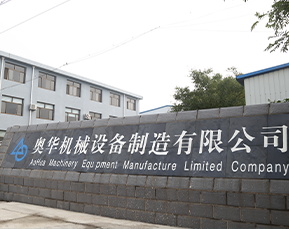 Afrikaans
Afrikaans  Albanian
Albanian  Amharic
Amharic  Arabic
Arabic  Armenian
Armenian  Azerbaijani
Azerbaijani  Basque
Basque  Belarusian
Belarusian  Bengali
Bengali  Bosnian
Bosnian  Bulgarian
Bulgarian  Catalan
Catalan  Cebuano
Cebuano  Corsican
Corsican  Croatian
Croatian  Czech
Czech  Danish
Danish  Dutch
Dutch  English
English  Esperanto
Esperanto  Estonian
Estonian  Finnish
Finnish  French
French  Frisian
Frisian  Galician
Galician  Georgian
Georgian  German
German  Greek
Greek  Gujarati
Gujarati  Haitian Creole
Haitian Creole  hausa
hausa  hawaiian
hawaiian  Hebrew
Hebrew  Hindi
Hindi  Miao
Miao  Hungarian
Hungarian  Icelandic
Icelandic  igbo
igbo  Indonesian
Indonesian  irish
irish  Italian
Italian  Japanese
Japanese  Javanese
Javanese  Kannada
Kannada  kazakh
kazakh  Khmer
Khmer  Rwandese
Rwandese  Korean
Korean  Kurdish
Kurdish  Kyrgyz
Kyrgyz  Lao
Lao  Latin
Latin  Latvian
Latvian  Lithuanian
Lithuanian  Luxembourgish
Luxembourgish  Macedonian
Macedonian  Malgashi
Malgashi  Malay
Malay  Malayalam
Malayalam  Maltese
Maltese  Maori
Maori  Marathi
Marathi  Mongolian
Mongolian  Myanmar
Myanmar  Nepali
Nepali  Norwegian
Norwegian  Norwegian
Norwegian  Occitan
Occitan  Pashto
Pashto  Persian
Persian  Polish
Polish  Portuguese
Portuguese  Punjabi
Punjabi  Romanian
Romanian  Russian
Russian  Samoan
Samoan  Scottish Gaelic
Scottish Gaelic  Serbian
Serbian  Sesotho
Sesotho  Shona
Shona  Sindhi
Sindhi  Sinhala
Sinhala  Slovak
Slovak  Slovenian
Slovenian  Somali
Somali  Spanish
Spanish  Sundanese
Sundanese  Swahili
Swahili  Swedish
Swedish  Tagalog
Tagalog  Tajik
Tajik  Tamil
Tamil  Tatar
Tatar  Telugu
Telugu  Thai
Thai  Turkish
Turkish  Turkmen
Turkmen  Ukrainian
Ukrainian  Urdu
Urdu  Uighur
Uighur  Uzbek
Uzbek  Vietnamese
Vietnamese  Welsh
Welsh  Bantu
Bantu  Yiddish
Yiddish  Yoruba
Yoruba  Zulu
Zulu conveyor idler types
Understanding Conveyor Idler Types
Conveyor idlers play a crucial role in the efficient functioning of conveyor systems, commonly used in various industries such as mining, agriculture, and manufacturing. These components support and guide the conveyor belt, ensuring smooth operation and minimizing wear and tear. Understanding the different types of conveyor idlers is essential for selecting the right one for specific applications.
Understanding Conveyor Idler Types
2. Carrying Idlers Carrying idlers are the most commonly used type and are responsible for supporting the weight of the conveyor belt and the material being transported. They come in various configurations, including Trough Idlers, which use a three-roll design to create a trough shape that optimizes material containment and minimizes spillage. Flat idlers, on the other hand, maintain a level surface for transporting lighter loads.
conveyor idler types

3. Return Idlers Return idlers support the conveyor belt as it returns to the loading point. They help maintain belt tension and prevent sagging, which can lead to misalignment and operational issues. Like carrying idlers, return idlers can be flat or troughed depending on the design of the conveyor system.
4. Training Idlers Training idlers, also known as alignment idlers, are used to control the tracking of the conveyor belt. If a belt moves off-tracking, it can lead to excessive wear and even damage to the system. Training idlers correct this alignment issue by applying force to guide the belt back into position, ensuring smooth and efficient operation.
5. Special Idlers In addition to the standard types, there are also specialized idlers designed for particular applications. For instance, self-cleaning idlers prevent material accumulation on the idler rolls, which can hinder performance and lead to maintenance issues. Moreover, guard idlers provide added protection to the conveyor system by preventing foreign objects from interfering with the operation.
In conclusion, selecting the appropriate type of conveyor idler is vital for the longevity and efficiency of a conveyor system. By understanding the various types available—impact, carrying, return, training, and special idlers—operators can make informed decisions that enhance performance and reduce maintenance costs. Proper idler selection not only contributes to operational efficiency but also plays a significant role in the overall productivity of material handling systems.
-
Revolutionizing Conveyor Reliability with Advanced Rubber Lagging PulleysNewsJul.22,2025
-
Powering Precision and Durability with Expert Manufacturers of Conveyor ComponentsNewsJul.22,2025
-
Optimizing Conveyor Systems with Advanced Conveyor AccessoriesNewsJul.22,2025
-
Maximize Conveyor Efficiency with Quality Conveyor Idler PulleysNewsJul.22,2025
-
Future-Proof Your Conveyor System with High-Performance Polyurethane RollerNewsJul.22,2025
-
Driving Efficiency Forward with Quality Idlers and RollersNewsJul.22,2025





























